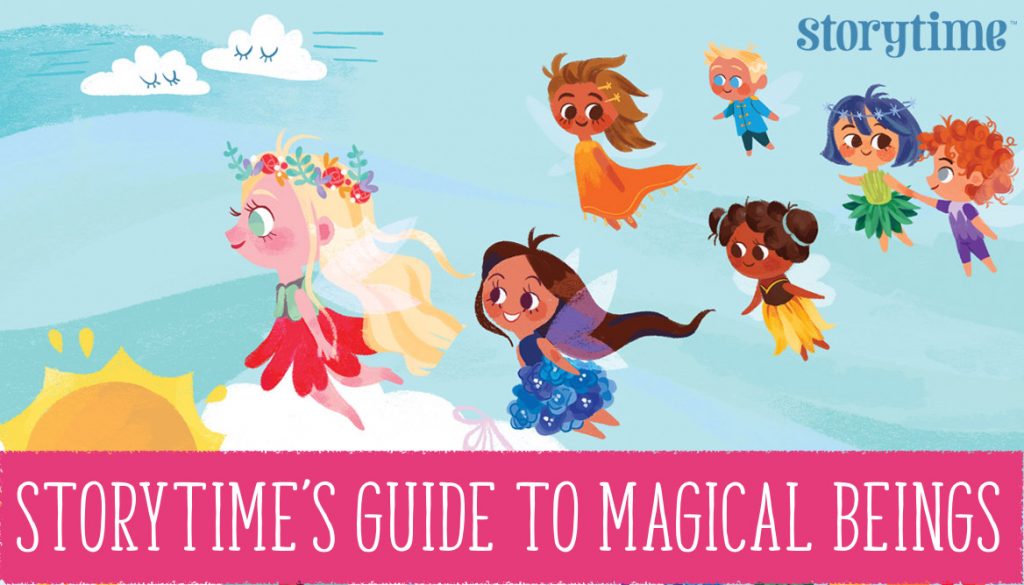
Ever woken up with your hair in knots? It might be the fairies! We’re so passionate about reading and improving literacy, we can talk about it until we’re blue in the face, but for a bit of fun and a lighter read, we thought we’d share part one of Storytime’s Guide to Magical Beings.
We’re lucky to have such rich and fantastical folklore in Europe, featuring so many extraordinary and enchanted creatures and beings. But The Wee Brownie – a Scottish folk tale in Storytime Issue 47 – inspired us to write this particular blog. We realised that, though residents of Scotland might be familiar with brownies, many readers won’t have come across this unusual magical sprite.
As a result, here’s a quick and easy guide to five of our favourites. See if you can spot them this summer and report back!
Storytime’s Guide to Magical Beings, Part 1
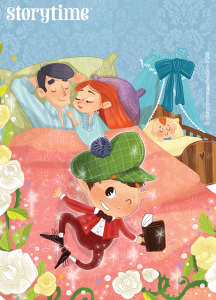
The Wee Brownie in Storytime 47. Art by Sara Torretta.
1. Brownies – one appears in Scottish folk tale, The Wee Brownie in Storytime 47.
Brownies are rarely seen household helpers. They are short and old in appearance, and rather scruffy too. Brownies appear only when you’ve gone to bed because they delight in tidying up your mess. They mainly inhabit Scotland and northern England. If you love your brownie, never leave it a gift of money or clothes or they will leave your home forever. However, they’ll never refuse a bowl of creamy porridge, especially if it’s drizzled with honey. Brownies are a type of goblin and have different names in other cultures. For instance, in Scandinavia, they are known as tomte. It seems likely that Dobby the house elf from the Harry Potter book series was based on a brownie.
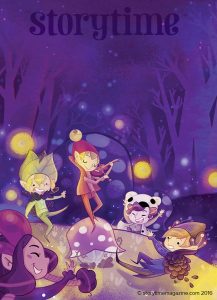
Pixies dancing in Storytime 23. Art by Astrid de Souris.
2. Pixies – a pyramid of these cheeky imps stars in Nancy and the Pixies in Storytime Issue 45, and The Laughing Pixie is an Arthurian folk tale in Storytime Issue 23.
Known locally in Cornwall as ‘piskies’, these diminutive creatures are similar to elves. You can spot them on the moors of Devon, Somerset and Cornwall, where they live in secret places underground. They wear pointy hats and have pointed ears too. They are famous for being playful – often mischievous – and they love to dance, which they happily do all night. Hundreds of pixies often dance in large circles together. Surprisingly, they’re also keen on wrestling and horse riding. Bad-tempered pixies are called spriggans and you should avoid them at all costs.
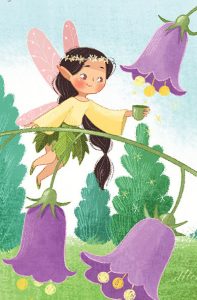
A fairy from Elidor and the Golden Ball in Storytime Issue 30. Art by Nina de Polonia.
3. Fairies – You’ll find many fairies in Storytime, including The Legend of Knockgrafton in Issue 42, The Fairy Dog in Issue 39, Elidor and the Golden Ball in Issue 30 and Fairy Ointment in Issue 10. The fairies in our header appeared in Issue 35. (Art by Anoosha Syed).
Fairies are one of the most famous magical creatures in European folklore, but seeing a fairy is extremely rare. Though fairies look human, they often have green eyes and can range in size from tiny to the size of a child. Not all fairies have wings. Fairies can be naughty. They like to lead travellers into their hidden realms or sneak into your room at night and tangle up your hair. If you wake up with knotted hair, you’ve probably been visited by a fairy. If this worries you, wear a protective charm. Try wearing your pyjamas inside out, for instance, or placing a piece of bread by your bedside.
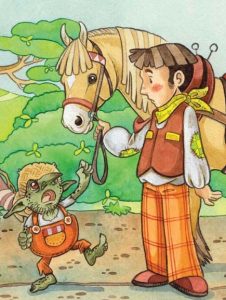
A grumpy boggart in Storytime 8. Art by Marga Biazzi.
4. Boggarts – The most notorious boggart of all featured in Storytime Issue 8 in The Farmer and the Boggart.
Boggarts live mainly in England. Mostly, they make their homes in marshy bogs, hence their name. However, some boggarts live in houses. They especially like to live close to farms, where they do their best to cause chaos and steal crops. Without doubt, they are beastly little beings. They’re unpleasant to look at, scruffy, grumpy and always up to no good. If you spot a boggart, do your best to not to make eye contact with it or it will follow you around forever. Boggarts can also change shape and appear as wild animals. Never name a boggart or it will become truly wild and destructive, tearing up your home or fields. Scientist are yet to understand why.
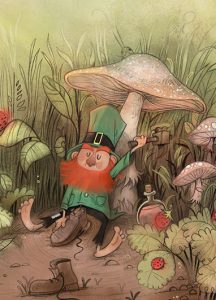
A smart little leprechaun in Storytime 31. Art by Daby Ihsan
5. Leprechauns – For a funny and clever leprechaun story, read Jack and the Leprechaun in Storytime Issue 31.
Many people forget that these funny little men, often shown with red beards, are actually a type of fairy. Leprechauns are found throughout Ireland. They can be friendly or they can be fiendish tricksters, depending on how you treat them and what mood they’re in. They’re talented shoemakers and often keep a stash of gold in a secret underground burrow, which you can claim, but only if you’re clever enough. If you catch a leprechaun, he might grant you three wishes – but he’ll probably do his best to trick you first.
We hope you’ve enjoyed this first instalment of Storytime’s Guide to Magical Beings. You might welcome some of these characters into your home quite readily, but you’d better steer clear of spriggans and boggarts! Don’t worry if you don’t spot any magical beings – you can always find them in the pages of Storytime. On the other hand, if you do encounter any of the creatures above, we’d love to hear your stories. You can always contact us via Twitter, Facebook or Instagram.
Until next time, we’re away with the fairies!




